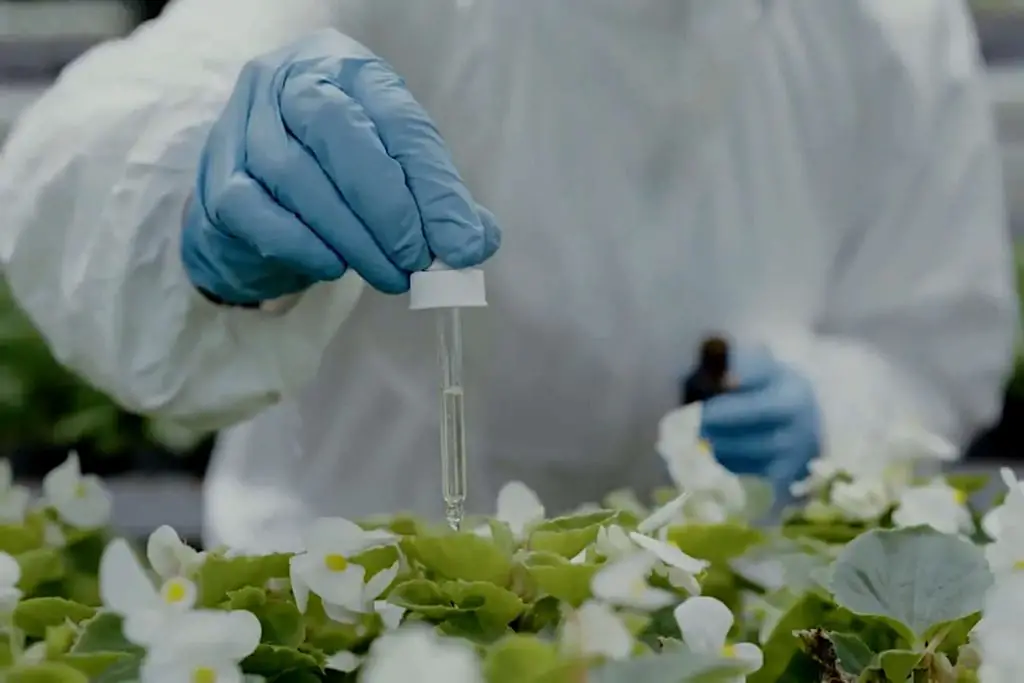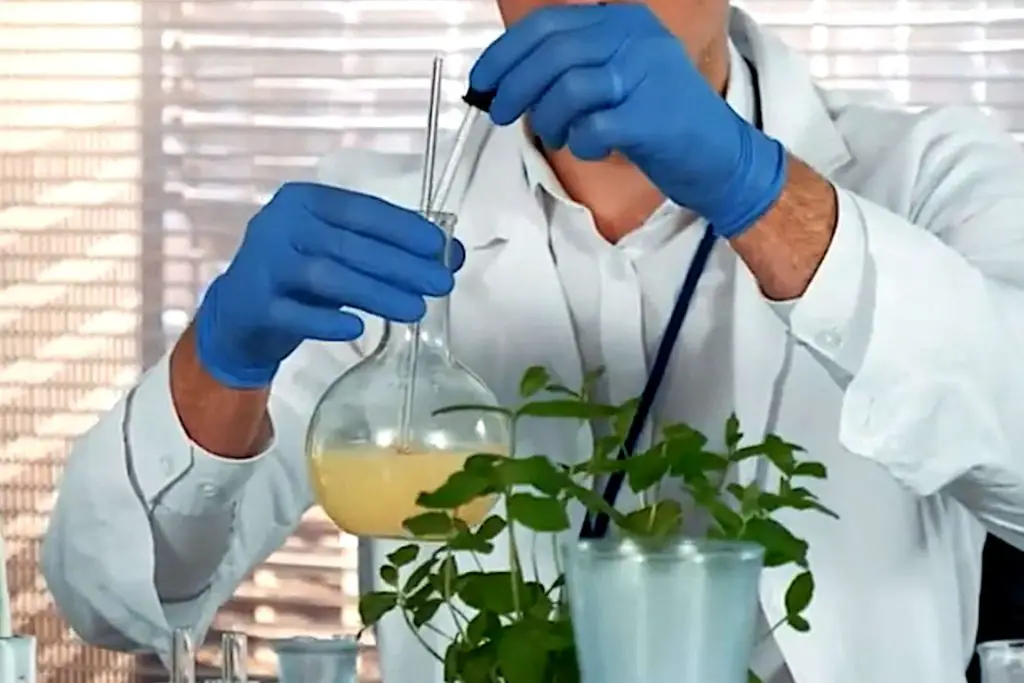Nutrient Solution for Semi Hydroponics – Fertilizing Your Houseplants in LECA or Other Growing Mediums
The nutrient solution for semi-hydroponics is one of the most important aspects of growing and cultivating with a semi-hydroponic system. As a gardener, you know that there are a lot of factors to consider when it comes to keeping your plants healthy and happy. Houseplants need nutrients in order to survive and thrive.
When you switch your plant’s substrate to LECA (lightweight expanded clay aggregate) or any other growing mediums or hydroponic systems, you will need to add in those nutrients yourself. This is provided by using a nutrient solution and pH management to ensure the nutrients are taken up by the plants.
You can also look to combine your nutrient solution for semi-hydroponics with other elements. These additional additives can promote better nutrient absorption, root growth and deal with any plant shock caused by transferring into LECA or other hydroponics-based growing systems. You will find with the right nutrient solution for semi-hydroponics prepared, your plants will be healthy and thriving in no time!
When mixing up a nutrient solution for semi-hydroponics, you’ll need to consider the three main nutrient elements that plants need to thrive: nitrogen, phosphorus, and potassium. You’ll also want to consider rooting stimulants, and other additives which can help minimize any repotting shock, promote strong root growth, and increase plant wall cell strength.
How To Properly Fertilize Semi-Hydroponic Houseplants

When it comes to fertilizing your plants, you want to make sure that you are doing it in the most effective way possible. This is especially true for semi-hydroponic plants, as they can be more difficult to care for. With that in mind, here are some tips on how to properly fertilize your semi-hydroponic plants:
Advantages LECA Balls as a Substrate Give to Feeding Your Plants.
Using LECA balls as a substrate has a number of advantages. They allow for longer intervals between watering, they drastically reduce the risk of root rot, by helping to make oxygen accessible to a plant’s roots, they increase environmental humidity through water evaporation, and prevent pests.
However, LECA as a substrate itself contains no nutrients, and these need to be added to feed the plant through the water. Rather than a disadvantage, this can be seen as an advantage. They act as a blank slate, allowing you to adjust the nutrients to suit the individual plant, giving you better control over the process. This can be particularly beneficial if you’re growing plants that have specific nutrient requirements.
Step for Adding Nutrients to Plants Potted in LECA
Putting together your nutrient solution for semi-hydroponics involves a few steps from using the right water, working out a plant’s nutrient requirements to mixing the solution. Then you have to consider whether to use additives to enhance the end results and check that the pH level is suitable for the plant. We will look at each of these processes in detail and discuss the best approach to creating the most effective nutrient solution possible.
The Mineral Content of the Water You Use With LECA
If you’re potting your plants in LECA, vermiculite, or other growing mediums, it’s important to be aware of the mineral content of the water you’re using. The difference between tap water and distilled water is that the latter has a PPM level of 0, meaning that it doesn’t include any calcium or magnesium. whereas tap water can contain between 20-300 ppm because of the various additives that are put into it. You’ll need to add these minerals back into your nutrient solution because they are essential for plant growth.
Plants Need Calcium and Magnesium
Calcium is essential for plant cells to maintain the integrity of their cell walls. If your plant isn’t getting enough calcium, you may notice that its leaves become misshapen. Magnesium, on the other hand, plays a key role in photosynthesis. If your plant is deficient in magnesium, its leaves will turn brown.
By being aware of the mineral content of the water you’re using to pot your plants in LECA, you can ensure that they’re getting the nutrients they need to thrive. Traditionally gardeners have used lime to improve calcium and magnesium levels in soil can also be used in a nutrient solution.
One exception to this is epiphytes plants, such as orchids, which prefer a much lower level of calcium and magnesium than other plants, the ideal levels being between 100–200 ppm. As such it is better to use filtered or distilled water and add back small amounts of these salts.
Adding the Main Nutrients to Your LECA Solution
There are several ways that you can go about this. You can dilute commercial fertilizer liquids or create your own tailored nutrient solution for semi-hydroponics. Which approach you take will depend much on what you are planting and your expertise in creating fertilizer.
You have a much better idea of nutrient levels in commercial products as opposed to fertilizers that you may produce at home.
The key point to consider when adding your fertilizer is that various plant species need different ratios and different nutrients. All plants though need the three main nutrients of Nitrogen, Phosphorous, and Potassium (NPK) to some degree.
Nitrogen (N) is responsible for promoting foliage and leaf growth, while phosphorus (P) helps to create a strong root system. Potassium (K), meanwhile, is important for overall robust growth.
Commercial Fertilizers
You will need to check each individual plant’s nutrient requirements but probably the easiest way to create your solution containing the right balance for the right plant is to use commercial fertilizers designed for hydroponics.
There are many different options available but the general consensus among gardeners is that the FloraGro, Bloom, and Micro set of fertilizers cover most bases and work well. Another popular choice is Dyna-Gro’s Foliage Pro (9-3-6 ) a good general-purpose choice. Personally, my preferred fertilizer is ENVY A and B, a two-part base that can also be used for coil or dirt-based substrates.
Homemade Fertilizer Liquid – DIY Nutrient Solution
Composting can be more than just about piling your green and brown waste and allowing it to break down over time and turn into compost. There are a number of other ways in which you can obtain nutrients from organic waste one of which is to make compost tea and another is to create an organic stew both of which methods produce a nutrient-rich solution.
When using either of these methods the exact nutrient levels and ratios can vary depending upon what organic materials (the various recipes that you follow) you add during the processes. The way to monitor the nutrient levels within the solutions produced is to use a soil testing kit. There are various types of soil test kits available but you should regularly test your growing mediums for nutrients and pH levels anyway so I would recommend a digital soil tester as it can be reused indefinitely.
As your homemade fertilizer liquid base is water you shouldn’t have to dilute it any further but you are likely to want to include certain additives (see below) depending upon the plant.
Additional Additives to Create a Better Nutrient Solution for Your Houseplants


Having got the balance of Nitrogen, Phosphorous, and Potassium that you require there are several other additives that you can use to improve and adjust the solution to suit specific plant types.
Rooting stimulants, for example, can help reduce any shock caused by transplant and encourage robust root growth. Fulvic acid can help increase a plant’s capacity to absorb nutrients, while probiotics can help create a better root zone environment by increasing the amount of beneficial bacteria present. Finally, by adding potassium silicate you can help stave off pests and create stronger plant cell walls.
Mixing Up Your Nutrient Solution for Semi Hydroponics
Now we have gone through all the elements required for a good nutrient solution we have to mix it all together to get our houseplant fertilizer for LECA, other semi-hydroponic growing mediums or even to be used with potting mix.
Mixing a nutrient solution for semi-hydroponics is a fairly simple process. Different manufacturers have different concentrations so be sure to read the label.
Once this is mixed you may want to put in some of the additives that will improve the solution’s effectiveness.
Potassium Silicate – Silica Gold is a good product. You only need to add around 2-4ml to your nutrient solution. Initially err on the side of caution and build up to 4ml as you see how each plant benefits.
Calcium/Magnesium – If you are looking to manage or add to the calcium and magnesium levels of the solution then using Cal-Mag Complete is one of the best ways to do it. You only need to add 1-2ml to each gallon you have mixed up. Another option for increasing calcium levels is to add lime to your nutrient solution.
Fulvic Acid – For adding fulvic acid Organic Liquid Humic Acid is a very effective product. To use you would dilute around 2-4oz into a gallon of your solution.
Root Stimulant – For root stimulants, SuperMicrobe Root Stimulator is an excellent all-round organic product made from kelp and salmon byproducts.
You may decide to use some or all of the additives but you will find your own sweet spot for the varieties of plants that you keep.
Checking The Nutrient Solution’s pH


If you’re growing plants in a hydroponic system, it’s important to regularly check the pH of your nutrient solution for semi hydroponics and adjust accordingly. This is because the pH level can have a big impact on how well your plants are able to take up nutrients, different plants can only absorb certain nutrients within certain pH ranges.
In addition, pH levels can have an effect on the absorption of certain elements. For example, neutral to alkaline circumstances are good for the taking up of magnesium and calcium, whereas slightly acidic to the neutral range is ideal for the taking up of iron, zinc, and copper
The ideal pH for a hydroponic system is around 6.5. This is because, at this pH level, nutrients are most easily absorbed by plants. If the pH of your nutrient solution is too high or too low, your plants may struggle to get the nutrients they need to thrive.
Fortunately, it’s easy to test the pH of your hydroponic system. Soil test kits will have a pH checker as part of the various tests that they offer. Again, as you should be checking regularly it is probably better to invest in a digital tester. You can either buy it online or pick one up in most garden stores.
Once you know the pH of your system, you can adjust it as needed to ensure that your plants are able to take up nutrients efficiently.
Adjusting the pH Level of Your Nutrient Solution to A Plant’s Ideal Range
The pH of your nutrient solution for semi-hydroponics is important to the health of your plants. The ideal range for most plants is 5.5 to 6.5. Adjusting the pH of your nutrient solution to this or the specific range a plant requires ensures that your plants are getting the nutrients they need to thrive.
There are special pH adjustment kits that you can buy that you can use to alter the pH levels of your solution. Using these kits, you can usually add a few drops of the adjustment liquid into your nutrient solution. This will then allow you to adjust up or down as needed using the various liquids provided in the kit. This is a great way to ensure that your solution is in the ideal pH range for the plant.
Using Your Fertilizing Nutrien Solution on Your Plants


The application of the solution will depend on your semi-hydroponic growing medium. With LECA as LECA balls can be used with as a stand-alone growing medium or in combination with dirt-based mediums applications will vary slightly.
In terms of LECA as a standalone medium, if you are using the semi-submerged method, then you will add the nutrient solution so that it is around a third, or slightly more, of the way up the side of the pot from the bottom. On the other hand, if using the nutrient stagnant wick method then you would pour the solution into the reservoir below the plant, topping it up as necessary as the solution is drawn into the LECA via the wick.
Applying the nutrient solution to semi-LECA and dirt-based mediums is done in a more conventional way. The key is to apply the fertilizer in a consistent manner. When you are applying the solution to your plants, you want to make sure that you are doing so evenly. This will help to ensure that all of the plants or if in a box, all plants are getting the same amount of nutrients, which is important for their health.
Summary: Nutrient Solution for Semi Hydroponics
As we have seen, the process of creating a good nutrient solution for semi-hydroponics can be quite involved from using the right type of water to assessing different plants’ nutrient needs. You can though prepare and make your fertilizer solution in advance and keep it for long periods of time if stored correctly.
It is important to know exactly the nutrient levels and ratios that the plants you are feeding need. This can vary not only from species to species but even vary dramatically within a species, orchids being a prime example.
There are many options for where to source the nutrients both commercial and homemade, each with its own advantages. In addition, spending the time to put in additional additives and regulate the pH levels of the solution pay off producing thriving plants that you will be proud of.
